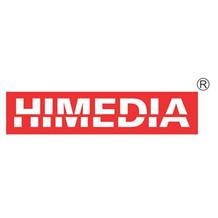Leibovitz's L-15 Medium, with L-Glutamine, without Phenol red and Sodium bicarbonate, 10 x 1 L, Pack of 10

Details:
Specifications Leibovitz's Medium was specifically designed to grow cells in a CO2 free atmosphere. The standard sodium bicarbonate/CO2 buffering system is replaced by combination of free basic amino acids, phosphate buffers and higher levels of galactose and sodium pyruvate. As a result, the medium does not require supplementation with sodium bicarbonate and can be used under conditions of free gaseous exchange with the atmosphere. The medium can be used to grow human tumor cells and embryonic cells and also established cell lines like HeLa and Hep-2. The medium is frequently used in diagnostic virology where tissue cell lines or strains need to be grown in closed systems. Leibovitz's medium obviates the need of frequent medium change.C985F77, C985F78, C985F79 and C985F80 is Leibovitz's Medium with L-glutamine. It does not contain phenol red. Users are advised to review the literature for recommendations regarding medium supplementation and physiological growth requirements specific for different cell lines.Storage and Shelf Life 1. All the powdered media and prepared liquid culture media should be stored at 2-8°C. Use before the expiry date. Inspite of above recommended storage condition, certain powdered medium may show some signs of deterioration /degradation in certain instances. This can be indicated by change in colour, change in appearance and presence of particulate matter and haziness after dissolution. 2. Preparation of concentrated medium is not recommended since free base amino acids and salt complexes having low solubility may precipitate in concentrated medium. 3. pH and sodium bicarbonate concentration of the prepared medium are critical factors affecting cell growth. This is also influenced by amount of medium and volume of culture vessel used (surface to volume ratio). For example, in large bottles, such as Roux bottles pH tends to rise perceptibly as significant volume of carbon dioxide is released. Therefore, optimal conditions of pH, sodium bicarbonate concentration, surface to volume ratio must be determined for each cell type. We recommend stringent monitoring of pH. If needed, pH can be adjusted by using sterile 1N HCl or 1N NaOH or by bubbling in carbon dioxide. 4. If required, supplements can be added to the medium prior to or after filter sterilization observing sterility precautions. Shelf life of the medium will depend on the nature of supplement added to the medium.CompositionIngredientsmg/LInorganic SaltsCalcium chloride dihydrate185.000Magnesium chloride hexahydrate200.000Magnesium sulphate anhydrous97.720Potassium chloride400.000Potassium phosphate, monobasic60.000Sodium chloride8000.000Sodium phosphate, dibasic anhydrous190.120Amino AcidsDL-Alpha alanine450.000Glycine200.000L-Arginine (free base)500.000L-Asparagine 250.000250.000L-Cysteine (free base)120.000L-Glutamine300.000L-Histidine (free base)250.000L-Isoleucine250.000L-Leucine125.000L-Lysine hydrochloride94.000L-Methionine75.000L-Phenylalanine125.000L-Serine200.000L-Threonine300.000L-Tryptophan20.000L-Tyrosine Disodium Salt276.160L-Valine100.000VitaminsCholine chloride1.000D-Ca-Pantothenate1.000Folic acid1.000Nicotinamide1.000Pyridoxine hydrochloride1.000Riboflavin-5-phosphate, Na0.100Thiamine monophosphate1.000i-Inositol2.000OthersD-Galactose900.000Sodium pyruvate550.000Quality ControlAppearanceOff-white to Creamish white, homogenous powder.SolubilityClear solution at 14.0 gms/L.pH without Sodium Bicarbonate7.70 -8.30Osmolality without Sodium Bicarbonate300.00 -340.00Cultural ResponseThe growth promotion capacity of the medium is assessed qualitatively by analyzing the cells for the morphology and quantitatively by estimating the cell counts and comparing it with a control medium through minimum three subcultures.Endotoxin contentNMT 5EU/ml
Additional Information
| SKU | 5172803 |
|---|---|
| UOM | Pack of 10 |
| UNSPSC | 41106200 |
| Manufacturer Part Number | AT207-10X1L |

